The number of people drowning in Loch Lomond has been a major issue for years, with our public authorities being far more concerned about the health and safety standards being applied to competitors in the European Swimming Championships, all by definition great swimmers, than the general public (see here). But even after the terrible events this summer (see here for critical coverage in the Guardian), LLTNPA’s senior management avoided producing a paper for the last Board Meetingthat analysed the issues and set out clearly what the National Park Authority could do about them. Instead information about water safety was hidden away in their Chief Executive’s Report (see here).
This was despite the LLTNPA Chief Executive, Gordon Watson, claiming in a news release on 25th July (see here) that:
“Over the coming days we will, along with our partners, reflect on the events of this weekend and discuss what more can be done by us all to prevent further tragedies in our lochs.”
So what did the reflection conclude and why wasn’t the outcome presented to the Board in the form of a practical plan, maybe using some of the unused £200k which staff had reported at the Board Meeting had been offered back to the Scottish Government?
A possible answer is that producing a proper paper might encourage public scrutiny of what the LLTNPA has actually been doing to reduce the likelihood of accidents. Here is the start of the Chief Executive’s report:
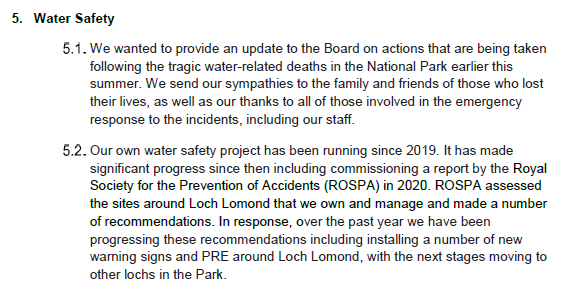
While claiming significant progress on their “own” water safety project, just six months before, at the March Board meeting, this was described as being “behind schedule” (see here):
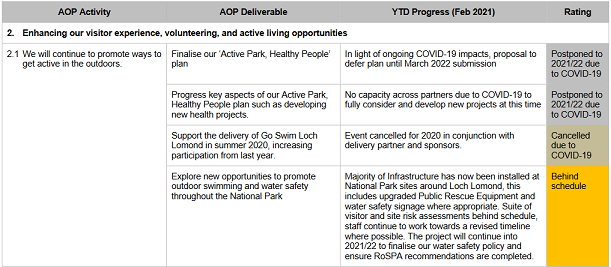
More specifically “the suite of visitor and site risk assessments were behind schedule”. One appreciates that these could have been affected by Covid, but the Chief Executive’s report fails to state whether risk assessments had been completed for Ardlui and Balloch before the four deaths in July. Why not? What is the LLTNPA trying to hide?
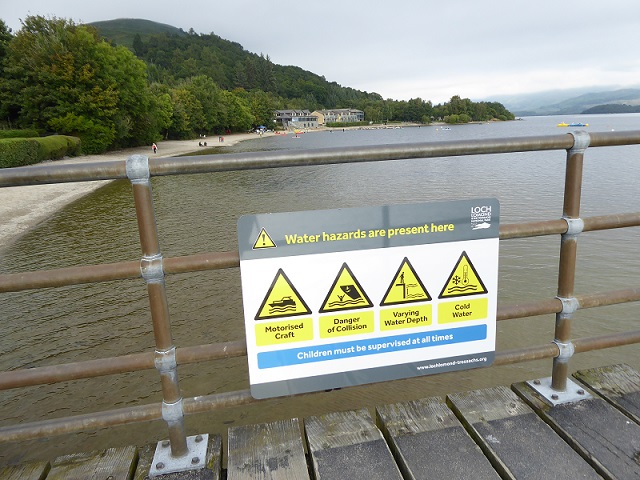
The LLTNPA commissioned a report from the Royal Society for the Prevention of Accidents in 2020, which is referred to in the Chief Executive’s report, but this only considered the sites the LLTNPA owns and manages. It does not appear to have been published on either the LLTNPA or RoSPA websites. It’s impossible to ascertain therefore how far its recommendations have been met even for the sites the LLTNPA manages.
If the original plan was fit for purpose and the signage really complete as claimed in March, why does the Chief Executive’s report say new campaign signs have been installed?

And why, after all the drownings in the National Park over the years, has the LLTNPA only started to draft a Water Safety policy this year? Some of the measures that could be taken to reduce deaths are obvious, as Jackie Baillie, the West Dunbartonshire MSP, pointed out to the Guardian (link above): not just warning signage but lifebelts (which could help reduce the number of people who drown as a result of jumping in to try and save others) and lifeguards on popular beaches.
A primary reason for the lack of practical action is that the LLTNPA, which is supposed to be the lead for outdoor recreation in the National Park as a whole, has been taking a very narrow view of its responsibilities and only considering its own “estate”. That is clear from the next paragraph in the Chief Executive’s report to their meeting two weeks ago:

Actually, this claim is disputable. The LLTNPA have a statutory duty to promote public enjoyment of the National Park and have only been too happy to promote water based tourism, e.g. through mass swimming events. Doing that, while trying to absolve themselves from responsibility, is an untenable position. It seems that it may have taken the intervention of the Scottish Minister responsible for community safety, Ash Denham, who convened a meeting after the deaths by drowning in July, to knock some heads together.
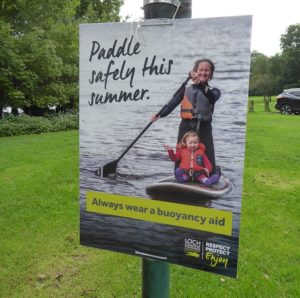
Reducing the number of people who drown in Scotland is a complex matter and in my view the single greatest difference could be made through the Scottish Government ensuring all children were taught to swim at school. It is not the LLTNPA’s responsibility to do that. But where they do have a key role is in advising the public of natural hazards, promoting safety in popular visitor spots and preventing accidents caused by competing interests.
Although cheap, signage is not the best way to increase public awareness of natural hazards and water safety. If you buy or hire a paddle board, someone will almost certainly advise you to wear a life jacket, and talking to other more experienced people is the best way to learn about safety issues. Promoting outdoor education centres and giving people the opportunity to experience and learn about various water-based activities under the supervision of qualified instructors is likely to be far more effective than signage in the medium to long-term.
While not responsible for outdoor education centres directly, the LLTNPA have kept silent while they have been shut down and there was not a single mention of the role of outdoor education in the LLTNPA draft Outdoor Recreation Plan (see here). Further consideration of that plan, which would also have been the appropriate place to include plans for water safety, has now been delayed to next year five whole years AFTER the last outdoor recreation plan expired (see here).
Another area where the LLTNPA clearly does have direct responsibility for water safety is in preventing accidents caused by competing water-based recreational interests. There can be no disputing this on Loch Lomond. The LLTNPA is responsible for the water byelaws there, part of whose purpose is to ensure the “many types of recreational activity to be undertaken safely and responsibly”. And it is the LLTNPA that is responsible for enforcing them.
Problems have been increasing over the last few years and the great increase in wild water swimmers, paddle boarders and people using inflatable kayaks (all good things) combined with speeding boats is an accident waiting to happen.
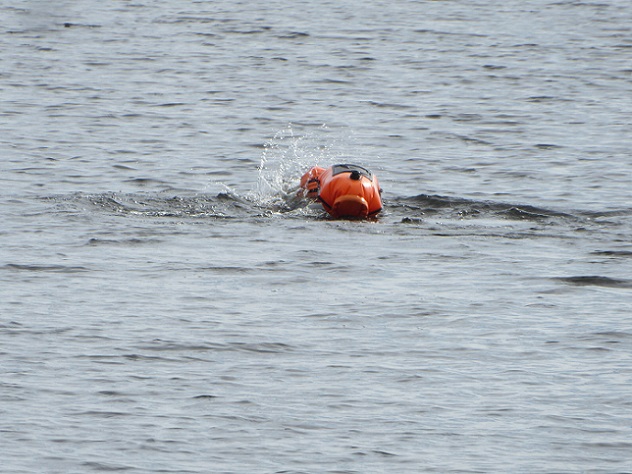
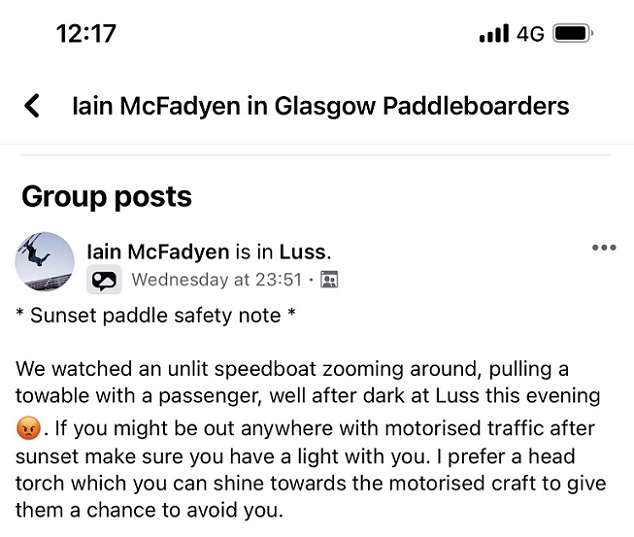

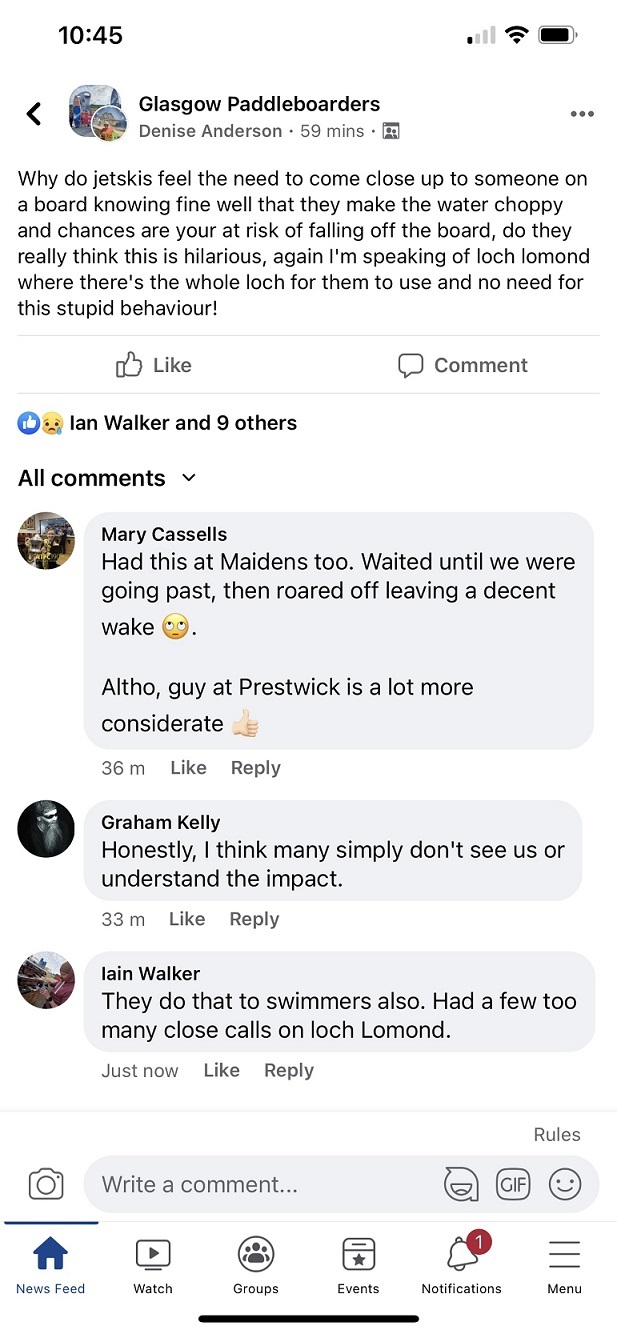
What needs to happen
- Clearly set out out its role in relation to water safety within the wider context (the need for swimming lessons, outdoor education etc);
- Commit to an early review of the Loch Lomond byelaws, reducing speed limits further in congested areas like Luss Bay and the River Leven and to enforcing speed limits in the restricted areas
- Consider what practical measures could be taken to reduce the likelihood of accidents (life belts, life guards etc) and what resources would be required to deliver this.
As someone who has been a swimmer for the past 40+ yrs & has done the life guard qualifications, amongst other swimming awards, I’ll comment:- I happen to also do “wild swimming” in the Moray Firth off Nairn beach, & started several years ago before it became the “in” thing to do. In this time I have seen more people taking up wild swimming, paddle boarding, kayaking etc., etc., & on some days there can be quite a bit of “traffic”. However, after watching many of these people, I fear they DO NOT have the necessary swimming/self survival capabilities & if the proverbial hits the fan they will be well out of their depth, literally & figuratively speaking! On the topic of swim floats, they can be mistaken for various fishing net/pot buoys, and many swimmers still wear black swim caps! The best advice I can give is to wear a highly fluorescent coloured swim cap & fluorescent coloured sports arm sleeves over the wetsuit. The arm sleeves to be in a different colour to the swim cap. This makes you highly visible especially when your arms come out of the water when doing freestyle. Irresponsible people on jet skis have caused problems in Nairn Harbour entrance & have been speeding in the 5knot entrance etc. & will continue unless the penalties are enforced or harsher. There have also been instances where jet skis & small fast boats have “buzzed” too close to the beach when there have been paddle boarders & swimmers in the water. Life belts/rings have repeatedly been vandalised along the Nairn Beaches & in some occasions it has taken awhile for a replacement to be fitted. This may be one reason why there are less of these at beaches etc, due to increased replacement costs.
For as long as I can remember the simple message was given – don’t swim in Loch Lomond, it’s not safe.
There are sudden drop offs, underwater overhangs, sunken trees, thermoclines and other hazards.
For some reason LLTPA decided to ignore this and actively encourage people to swim in the loch, for example by promoting mass organised events (which close the slipway to trailer boats for a weekend in peak season when there is no need to hold it there.) Why then is it any surprise at all that people are dying as a result?
As for signs, that is their answer to everything. If there is one visible impact of the advent of LLTPA at Loch Lomond it is the proliferation of signs which are usually notable for being surrounded by people totally ignoring them. I once challenged a Ranger about this and she replied “If we didn’t have the signs it would be anarchy.” Work that one out!
As regards the issue of reckless PWCs and speedboats, wasn’t compulsory licencing, registration numbers and big black RIBS full of Rangers supposed to stop that? If it doesn’t (and any longtime loch user will tell you that) then what is the point of them, get rid of them and spend the huge sums they cost on actual facilities instead. As mentioned elsewhere on this site, toilets and bins would be a start, pontoons to access them would be a bonus.
If people who lost loved ones were to take legal action against LLTNPA for their failures to deal with this problem One example is Duncan Mills Slipway No lights on the pier Members of the public constantly use the pier after darkness when out walking their dogs
The result would be even more restrictions and rules for the sensible which would continue to be ignored by idiots.
What next, lights on every footpath and trail or no access after dark?